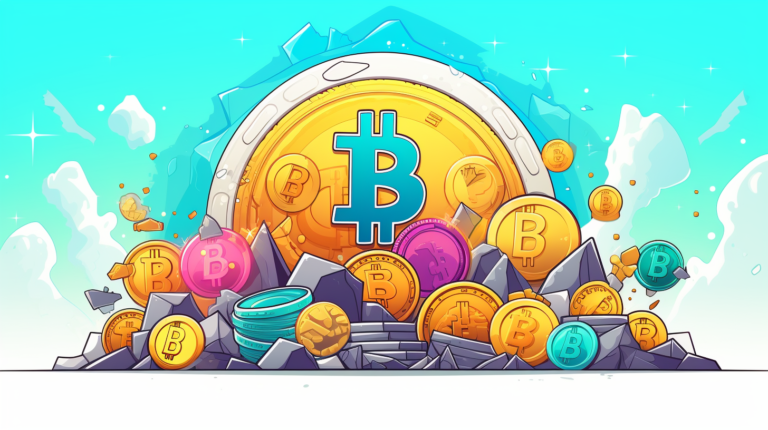Sales Tax vs VAT: A Comprehensive Comparison

Oh boy, remember the times when terms like sales tax and Value-Added Tax (VAT) used to mix you up? Trust me, I understand the struggle. As a seasoned financial advisor now, there were moments in my greenhorn days when these two taxes befuddled me too.
No worries though – this blog is here to help! We aim to untangle those complex notions and shed some much-needed light on “Sales Tax vs VAT: A Comprehensive Comparison”. Shall we dive into these captivating insights together? You bet!
Key Takeaways
- Sales tax is added to the price when you buy an item. It taxes goods and services once at their point of sale.
- Value – added tax or VAT is paid bit by bit during production. Goods and services are taxed more than once in this way.
- “Nexus” can affect sales tax but does not impact VAT. Nexus means a business has a tie to a region that may lead to extra taxes.
- Paperwork for VAT tends to be harder than for sales tax.due to its many steps in payment time.
Definition of Sales Tax

Sales tax is a government levy imposed on the sale of goods and services, typically calculated as a percentage of the purchase price. It’s an indirect form of taxation paid by consumers at the point-of-sale but remitted to the government by businesses.
The sales tax amount depends on various factors including location, items purchased, and whether the consumer has any kind of exempt status. Specific regulations may differ across states or regions; in general, though, businesses are expected to manage this tax effectively – hence obtaining a permit might be needed per regional obligation rules.
How Sales Tax Works
You pay sales tax when you buy things. Sellers add the tax to the price of goods or services at checkout. This means you pay more than the listed price. The amount differs in each state and city because they set their own rates.
After collecting this money, sellers send it to their local government.
Factors Determining Sales Tax
I want to tell you about some factors that control sales tax. First, the type of product sold has an effect. Various regions have distinct taxes for different goods and services. Also, your business location matters. Sales tax differs from state to state in the U.S.
Understanding Value-Added Tax (VAT)

Let’s dive into another form of tax known as Value-Added Tax or VAT. Unlike sales tax, VAT is imposed on every stage of the production and distribution processes. This indirect tax has three different types – Production, Income-based, and Consumption.
Each comes with its own unique characteristics that impact how it works within various business structures. Whether you’re a manufacturer utilizing raw materials or an online retailer selling digital goods to consumers around the globe, understanding VAT is imperative for managing your taxes accurately and efficiently.
How VAT Works
VAT works in stages. Every member of the product line pays a bit of tax. This includes who makes it, sells it, and buys it. Each person adds to the product’s value, so each pays some tax.
The buyer does not pay all the VAT at once like sales tax. They only pay for what they add to the product’s worth when they buy it. For example, if I sell you a toy car that I made from raw materials costing $5, I will charge you VAT on that added value (also known as “mark-up”).
The government then collects this piece by piece until entire VAT is paid for each good or service sold.
Types of VAT: Production, Income-based, Consumption
Let’s talk about the three types of Value-Added Tax, commonly called VAT. First, we have Production VAT. This type is on all goods and services. We pay this kind of tax every time we buy things like food, clothing, or furniture.
Differences Between Sales Tax and VAT

When comparing sales tax and VAT, the key differences lie in payment time, administrative aspects, and their impact on goods and services. Sales tax is applied only at the final point of sale while VAT accumulates during all stages of production.
From an administration perspective, sales tax tends to be simpler than VAT due to its straightforward application at the end-point retail level. Lastly, one notable difference between both is that VAT might induce higher prices for consumers as it’s added throughout each phase of a product’s lifecycle – from raw material procurement to final retail sale.
Payment Time
Sales tax is paid right when you buy things. The buyer pays it all at once. For VAT, it’s different. It gets shared out among many people in the selling process. Everyone just pays a little bit of it with each sale they make along the way.
This means that payment time is spread out for VAT but all at once for sales tax.
Administrative Differences
There are clear differences in how a business handles sales tax and VAT.
- Sales tax must get collected when a product or service gets sold.
- VAT gets applied at each production level, not just the end sale.
- Business owners must know their region’s sales tax rates.
- Failing to collect the right sales tax can lead to fines.
- With VAT, businesses can track all tax payments.
- Each part of the production chain shares in the VAT cost.
- Owners should follow region obligations for both taxes.
- Paperwork for VAT is often more complex than sales tax.
- Rules change if you transfer goods out of state or overseas.
- Businesses should always keep solid bookkeeping for taxes.
Impact on Goods and Services
Sales tax and VAT can change the prices of goods and services. This is how. The price goes up when a shop adds sales tax at the cash register. With VAT, every business in the supply chain pays part of it while making, selling or delivering goods and services.
It affects how they set their prices too.
Conclusion

In the end, both sales tax and VAT hit your wallet when you buy stuff. Sales tax takes a chunk right at the end, while VAT spreads it out over steps. You may like one better due to this key fact.
But remember – either way, part of that money goes back to help pay for things we all use every day!
FAQs
1. What is the difference between Sales Tax and VAT?
Sales tax is a consumer tax added to the price of goods or services at purchase time by US sales tax jurisdictions like states, while VAT (Value-added Tax) is an indirect tax added at each stage of production value.
2. Is there a risk of double taxation with Sales Tax or VAT?
Yes, it can happen without proper understanding and application of rules for exemption certificate for B2B sales, cross-reporting for international sales which involve both types of taxes could lead to double taxation.
3. How does taxation work in online marketplaces?
For remote taxpayers selling in online marketplace platforms, they often need to use tools such as AvaTax and meet their marketplace obligations set by Federal government for pay scales ranging from base pay to net pay alongside adhering VAT rates defined by region regulations.
4. Does different type goods affect how tax works?
Yes! Some agricultural industries (like forestry) may have certain consumption materials that face depreciation costs not taxed under regular provision; commercial services must follow specific monetary threshold before qualifying as permanent establishments faced on-field VAT risk assessments subject to audits.
5. Is evasion from Sales Tax or VAT possible?
While some might try techniques like falsifying bookkeeping records leading upto serious penalties for activities termed as ‘tax evasion’, prestigious corporate community employ legal service resources tackling issues related towards complying against all standards – thus avoiding any sort misapprehension with authorities overseeing fiscal representation policies meeting standards such that required under Brexit regulations labeled EU VAT returns.
6. Do businesses have access help when navigating through Taxes systems?
Businesses get assistance through various agencies dealing with streamlined solutions simplifying complexities associated around areas involving calculation & registration process within broader directives associated including needs covering aspects reflected in E-Invoicing procedure while discussing internatiaonl treaties focussed processing majorly reflecting digital media transactions requiring exclusive handling methods satisfying guidelines detailed under reporting rules setting standards for Self-supplied VAT as defined under EU VAT digital service MOSS.






